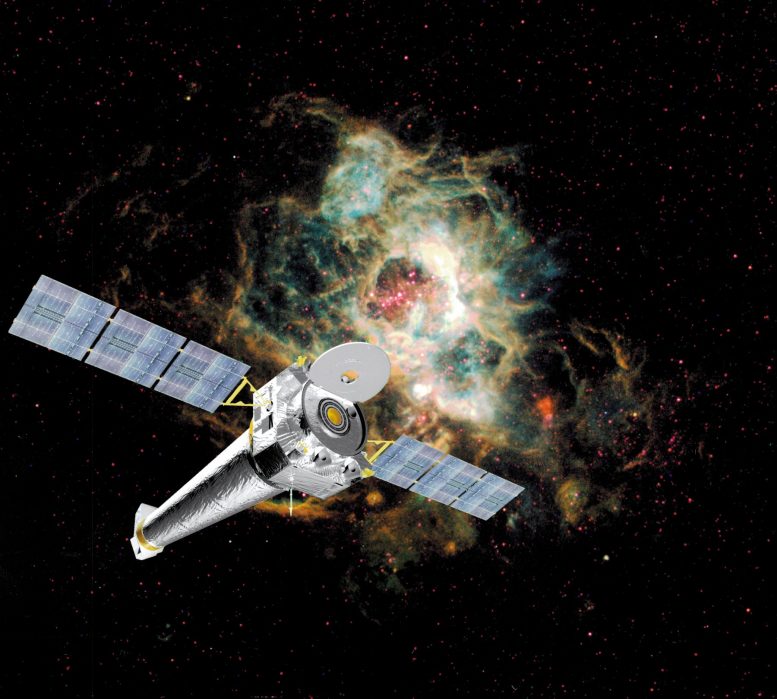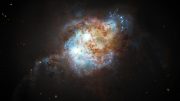Quasars are perhaps the best-known kinds of active galactic nuclei (AGN), galaxies whose central supermassive black holes are luminous, sometimes brighter than the rest of the galaxy. In an AGN, material accretes onto a surrounding torus of gas and dust, heating it to thousands of degrees and prompting the ejection of jets of charged particles.
In the case of quasars, our viewing angle is such that these dusty tori do not obscure the light and the bright core of a quasar dominates the galaxy’s emission. The most distant known quasar dates from the era only about 700 million years after the Big Bang, with dozens more known dating from the first few billion years.
One outstanding puzzle is how the supermassive black holes in these young quasars could have formed in the short time available since the universe existed. The very hot material and the fast-moving particles produce X-ray emission, especially from the inner region of the accretion. Although X-ray emission is difficult to detect from such distant objects, CfA astronomers Bradford Snios, Aneta Siemiginowska, Malgosia Sobolewska, Vinay Kashyap, and Dan Schwarz led a team that has obtained X-ray spectra from fifteen quasars that date from roughly a billion years after the Big Bang and that individually span a period of about one hundred and fifty million years.

The Chandra X-ray Observatory in Earth orbit. Astronomers have used Chandra to study the X-ray emission from fifteen quasars dating from an era only about one billion years after the Big Bang, in an effort to understand how the supermassive black holes in this early epoch evolved. Credit: NASA/CXC/D.Berry & M.Weiss
The astronomers used the Chandra X-ray Observatory to look at targets selected from a catalog of quasars whose characters and distances were already known from their radio emission and optical emission. In particular, the team selected quasars whose radio emission appears (based on its spectral shape) to arise from a small volume within the galaxy.
The astronomers analyzed the X-ray emission from these quasars with other data to infer how these objects and their emission may have evolved in comparison with quasars in the nearby universe. The most significant conclusion from this ongoing work is that there does not appear to be any clear evolutionary trends during this era. They also identified several outlier quasars, one of them named J1606+3124 with an extremely high gas density along the line-of-sight, only the fourth known quasar in the early universe known to have as much dense material.
Reference: “X-ray Properties of Young Radio Quasars at z > 4.5” by Bradford Snios, Aneta Siemiginowska, Małgosia Sobolewska, C. C. Cheung, Vinay Kashyap, Giulia Migliori, Daniel A. Schwartz, Łukasz Stawarz and Diana M. Worrall, 20 August 2020, The Astrophysical Journal.
DOI: 10.3847/1538-4357/aba2ca
arXiv: 2007.01342










Be the first to comment on "Puzzling Astrophysics of Quasars in the Early Universe"